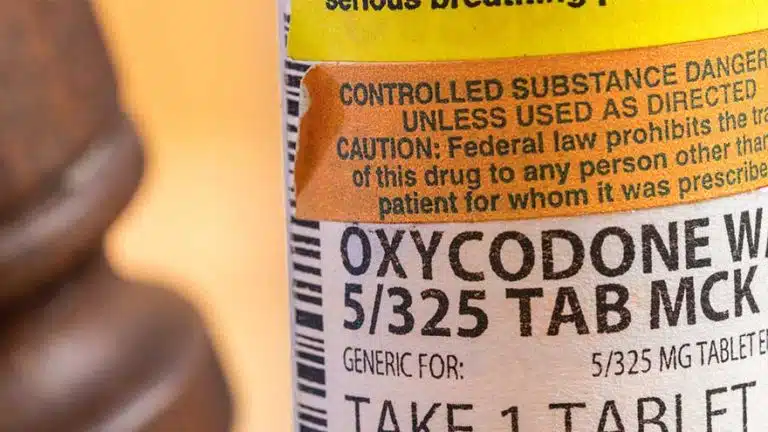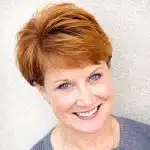Oxycodone Schedule & Drug Class | What Schedule Is Oxycodone?

Oxycodone is a Schedule II controlled substance and opioid analgesic, according to the Controlled Substance Act as classified by the United States Department of Justice (DOJ).
Because Oxycodone is a Schedule II substance, it has a high potential for abuse that can lead to physical dependence or psychological dependence.
Oxycodone is prescribed for those suffering from severe pain. It is a central nervous system (CNS) depressant and provides a sensation of sedation when used.
This synthesized prescription drug comes from thebaine, part of the opium poppy plant. Opiates occur naturally within the plant.
Oxycodone hydrochloride is considered an opioid and when abused, this Schedule II drug can cause a number of health problems including constipation, nausea, withdrawal symptoms, or overdose.
A Breakdown Of Controlled Substances
Controlled substances belong to one of five drug schedules according to the United States Drug Enforcement Administration (DEA).
Schedule I
Substances in the Schedule I category do not have an accepted medical use in the United States, according to the United States Food and Drug Administration (FDA). In addition to this, substances in this category have high abuse potential.
Examples of Schedule I substances include:
- marijuana (cannabis)
- lysergic acid diethylamide (LSD)
- methaqualone
- 3,4-methylenedioxymethamphetamine (ecstasy)
- heroin
- peyote
Schedule II
Severe psychological and physical dependence can develop when Schedule II substances are abused. In fact, Schedule II drugs have a high potential for abuse but have some accepted medical value as well.
Oxycodone is just one of many opioids that belong to this drug schedule. Other prescription opioids included in this category consist of:
- methadone (Dolophine)
- fentanyl (Duragesic, Sublimaze)
- codeine
- hydrocodone (Vicodin, Lortab, Tussionex)
- morphine
- meperidine (Demerol)
- oxymorphone
- hydromorphone (Dilaudid)
In addition to prescription opioids, other drugs that belong to Schedule II include:
- pentobarbital
- methylphenidate (Ritalin)
- amphetamine (Adderall, Dexedrine)
- methamphetamine (Desoxyn)
- amobarbital
Any derivatives or preparations which are needed for the chemistry of Schedule II substances also belong to the category. These can consist of salts of isomers and secobarbital, but not naltrexone.
Schedule III
The drugs belonging to the Schedule III controlled substance list may have less abuse potential than the substances mentioned in schedule I or II. Schedule III drugs can still be abused and may create physical and psychological dependence.
Non-opioids included in Schedule III include ketamine, benzphetamine (Didrex), anabolic steroids, and phendimetrazine.
In addition to this, some of the narcotic drugs that belong to Schedule III consist of products that do not contain more than 90 milligrams of codeine per dosage unit such as Tylenol with codeine and buprenorphine (Suboxone).
Hydrocodone is also in this category, but only when combined with acetaminophen.
Schedule IV
Compared to the substances belonging to the Schedule III category, Schedule IV substances have a low potential for abuse. However, the medications can still be abused.
Many benzodiazepines fall into the Schedule IV classification and include:
- lorazepam (Ativan)
- clonazepam (Klonopin)
- alprazolam (Xanax)
- triazolam (Halcion)
- diazepam (Valium)
- temazepam (Restoril)
Schedule V
With a low potential for abuse, drugs in the schedule V drug class consist of medications which contain opioids in small quantities. This means schedule V substances can consist of cough medications which do not have more than 200 milligrams of codeine per 100 milliliters.
Oxycodone Abuse
Oxycodone may cause a number of side effects, especially when the drug is abused. The pill can be crushed into a powder and snorted, causing nasal cartilage damage as well as nosebleeds and a runny nose.
Some may inject the drug, allowing the substance to enter the bloodstream more quickly. This form of drug abuse may lead to abscesses on the skin, collapsed veins, or diseases from sharing needles.
This Schedule II controlled substance should only be taken as prescribed by your healthcare provider.
If you or a loved one are struggling with drug abuse, contact us today to speak with one of our healthcare representatives who can help you find which treatment program best fits your needs.
Written by Ark Behavioral Health Editorial Team
©2024 Ark National Holdings, LLC. | All Rights Reserved.
This page does not provide medical advice.
Drug Enforcement Administration - Drugs of Abuse
Drug Enforcement Administration- Drug Scheduling
Drug Enforcement Administration - Oxycodone
National Library of Medicine: MedlinePlus - Opioid Misuse and Addiction
National Library of Medicine: MedlinePlus - Oxycodone

Questions About Treatment?
Ark Behavioral Health offers 100% confidential substance abuse assessment and treatment placement tailored to your individual needs. Achieve long-term recovery.
100% confidential. We respect your privacy.
Prefer Texting?
Our friendly support team is here to chat 24/7. Opt out any time.

People Also Read
- Opioid Drug Schedules
- Oxycodone Dosage Guide
- Oxycodone Withdrawal Symptoms
- Oxycodone Overdose Symptoms
- Side Effects Of Snorting Oxycodone
- Can You Smoke Oxycodone?
- Injecting Oxycodone
- Can I Mix Alcohol With Oxycodone?
- Street Value Of Oxycodone
- Does Oxycodone Expire?
- Oxycodone Pill ID
- What Is Opioid Abuse Disorder?






 Learn More
Learn More








